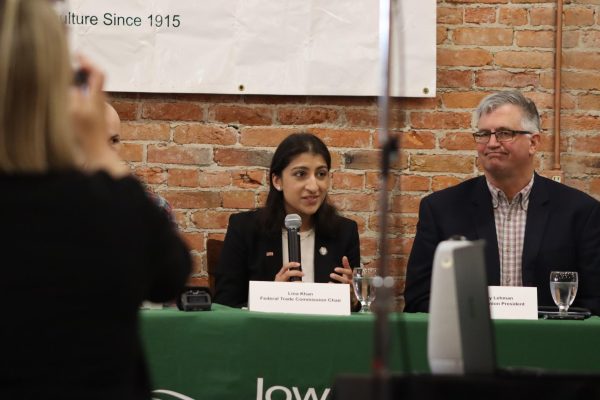What you need to know about the U.S. Supreme Court
The U.S. Supreme Court recently made two landmark decisions regarding workers’ rights for members of the LGBTQIA+ community and the legal status for immigrant children protected by DACA.
June 28, 2020
The U.S. Supreme Court recently made two landmark decisions regarding workers’ rights for members of the LGBTQIA+ community and the legal status for immigrant children protected by Deferred Action for Childhood Arrivals (DACA).
One of the two rulings was delivered by the Trump administration’s first Supreme Court appointee, Justice Neil Gorsuch, in a 6-3 vote and a momentous step for LGBTQIA+ workers’ rights. In the second ruling, a 5-4 vote delivered by Chief Justice John Roberts, the court’s decision prevented the dismantlement of an Obama administration program that protects immigrants brought to America as children, also known as “Dreamers.” Since these decisions, President Donald Trump tweeted courts do not “like” him and how the rulings were “shotgun blasts” for conservatives.
About the Supreme Court and its justices.
The highest judicial body in the United States and the lead of the federal judiciary, the Supreme Court consists of the chief justice of the United States and eight associate justices. The justices are nominated by the president and confirmed by a majority vote of the Senate. Justices serves for life tenure, serving “during good behavior.” This is terminated upon retirement or conviction on impeachment.
The Supreme Court accepts 100-150 cases, out of around 7,000, for review. The justices decide whether they will take a case by using the “Rule of Four.” Four of the nine justices must feel the case has value, then issue a legal order from the high court to the lower court to send records of the case for them to review.
The majority of the Supreme Court cases are heard on appeal from lower courts and the justices are likely to take cases that impact the country as a whole, not just on the individual level.
Current sitting Justices
- Brett M. Kavanaugh — Associate justice appointed by the Trump administration, serving since Oct. 6, 2018.
- Neil Gorsuch — Associate justice appointed by the Trump administration, serving since April 7, 2017.
- Elena Kagan — Associate justice appointed by the Obama administration, serving since Aug. 7, 2010.
- Sonia Sotomayor — Associate justice appointed by the Obama administration, serving Aug. 8, 2009.
- Samuel A. Alito, Jr. — Associate justice appointed by the G.W. Bush administration, serving since Jan. 31, 2006.
- John G. Roberts, Jr. — Chief justice of the United States appointed by G.W. Bush administration, serving since Sept. 29, 2005.
- Stephen G. Breyer — Associate justice appointed by the Clinton administration, serving since Aug. 3, 1994.
- Ruth Bader Ginsburg — Associate justice appointed by the Clinton administration, serving since Aug. 10, 1993.
- Clarence Thomas — Associate justice appointed by the George H. W. Bush administration, serving since Oct. 23, 1991.
Current Supreme Court Cases term: 2020-2021
Albence v. Guzman Chavez, which was granted June 15. The Court will decide if the detention of an immigrant who illegally reentered the United States after removal, or left voluntarily while under deportation is subjected to a removal order, this case is currently pending.
Borden v. United States, which was granted March 2, the Court will decide whether the “use of force” clause in the Armed Career Criminal Act includes crimes committed with an intent of “recklessness,” this case is currently pending.
Edwards v. Vannoy, which was granted May 4, the Court will review the decision of Ramos v. Louisiana — in which the U.S. Constitution requires a unanimous verdict to convict a criminal defendant for a serious offense — applies retroactively to cases on a judicial reexamination of a claim prior to the direct review process, this case is currently pending.
Niz-Chavez v. Barr, which was granted from the lower courts June 8, the Court will decide if the government must serve specific documents that includes information regarding the inadmissibility of an immigrant or may it serve the information over the course of as many documents, and as much time it should choose, this case is currently pending.
Updates for this information regarding Supreme Court cases and justices can be found at the Supreme Court of the United States website as well as Oyez.

















